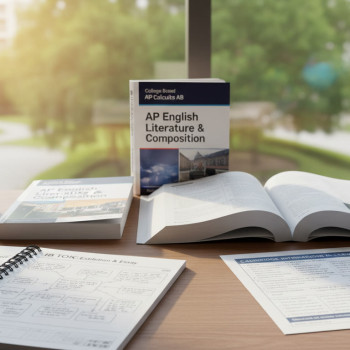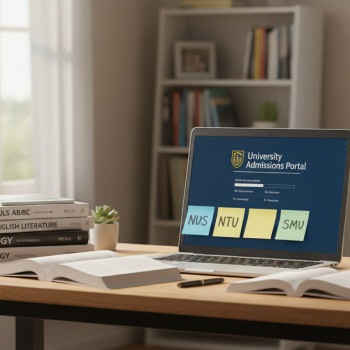Why Back-to-Back AP Exams Are a Different Kind of Challenge
If you’re staring at a schedule with two AP exams on consecutive mornings or an afternoon exam right after a morning one, you’re not alone—and you’re facing a challenge that’s equal parts academic, physical, and psychological. Most AP exams last 2–3 hours and combine multiple-choice and free-response sections, which means sustained concentration and the ability to switch thinking modes quickly. But beyond knowing formulas or facts, success on back-to-back days often comes down to how you manage your energy, your food, and your recovery.
This post is a friendly, practical playbook for students. Whether you’re taking AP Calculus in the morning and AP Physics in the afternoon, or AP English followed the next morning by AP US History, you’ll find evidence-informed strategies for building stamina, creating a fueling plan that works, and making exam day feel less like a sprint and more like a well-paced race. Where it fits naturally, we’ll mention how Sparkl’s personalized tutoring—1-on-1 guidance, tailored study plans, expert tutors, and AI-driven insights—can support these steps.
Start With the Exam Facts (So You Can Plan)
Before designing a stamina and fuel plan, know the exam logistics for each subject you’re taking. Most AP exams run between two and three hours and are split into sections (for many, a multiple-choice section followed by free-response). There’s often a short break between sections during which you may be allowed to step out of the room to drink water or have a quick snack—rules vary by exam format and proctoring. Talk to your AP coordinator at school about exact start times, the expected length, and break policies for each exam you’ll take.
Practical takeaway
- Confirm start times and break windows at least two weeks before exams.
- Plan practice blocks that mimic the length and structure of the real exams.
- If you need test accommodations (extra break time, food for medical reasons, etc.), secure them well in advance.

Train Your Brain Like an Athlete
Concentration and endurance are skills you can practice. Just like a runner builds from 3 miles to 10, your attention span grows with structured practice.
Simulated exam sessions
Schedule at least three full-length, timed practice exams for each AP subject you’re taking back-to-back. Crucially, do at least one session that mirrors the actual sequence: for example, take an exam in the morning and then, several hours later, do parts of the second exam or a timed practice that requires similar cognitive demands. This helps you understand how your focus shifts across the day.
Block training
- Start with focused 45–60 minute study blocks, then increase to two-hour blocks with only short 5–10 minute microbreaks.
- Use tools like the Pomodoro technique for stamina building, but also practice longer, uninterrupted blocks—exams are longer than a standard Pomodoro.
- Track how your accuracy and speed change over longer sessions and adjust pacing strategies accordingly.
Switching cognitive modes
Many AP exams demand different modes of thinking—calculation versus argument writing, for instance. Practice switching quickly by alternating question types in single practice days: 30 minutes of multiple-choice, then a 40-minute free-response section, then review. That agility reduces the mental friction on exam day.
Fuel for Focus: What, When, and How Much
Your brain is metabolically active—during intense thinking it uses measurable glucose and oxygen. But ‘brain food’ is not a magic bullet; it’s about steady energy and sustaining attention without stomach distractions.
Night before: prioritize glycogen and sleep
The evening before an exam is not the time for extremes. Aim for a balanced meal that includes complex carbohydrates (whole grains, sweet potatoes), lean protein (chicken, tofu, beans), healthy fats (avocado, olive oil), and vegetables. These foods top off glycogen stores and provide steady release of energy. Avoid heavy, greasy meals that can interfere with sleep or make you sluggish the next morning.
Morning of exam: steady energy, low risk
- Eat 2–3 hours before a morning exam: consider oatmeal with banana and nut butter; Greek yogurt with berries and granola; or eggs with whole-grain toast and fruit.
- If you’re short on time, a smoothie with fruit, protein powder or Greek yogurt, oats, and a tablespoon of nut butter is usually safe and portable.
- Limit high-sugar cereals or pastries that spike and crash energy.
During breaks: quick, non-messy, and digestible
Because many test rooms don’t allow food inside and only permit short breaks, choose snacks that are easy to eat and won’t cause stomach upset. Consider: a banana, a small handful of almonds, a plain granola bar, or a dried fruit portion. Avoid spicy, greasy, or heavy dairy-rich options right before testing.
Hydration
Dehydration, even mild, can impair concentration and mood. Drink water regularly in the 24 hours before your exam. Note that many exam rooms prohibit drinks at your desk—use the permitted break to rehydrate. Avoid excessive caffeine; a small cup of coffee can help if you’re used to it, but don’t try new strong caffeinated drinks on test day.
Sample Fueling Plan for a Two-Exam Day
| Time (Example) | Action | Food/Drink | Purpose |
|---|---|---|---|
| 6:30 AM | Wake up, light stretch, glass of water | 250–350 mL water | Rehydrate after sleep, gentle activation |
| 7:00 AM | Breakfast (2–3 hrs before exam at 9:30) | Oatmeal with banana, chia, and nut butter; Greek yogurt on side | Sustained energy; protein + complex carbs |
| 9:30 AM | AP Exam 1 begins | — | Conserve energy for test |
| Mid-exam 10-minute break | Snack and water (with proctor permission) | Banana or small handful of nuts; sip water | Quick glucose + electrolytes, mental reset |
| 12:30 PM (example) | Light lunch depending on exam end time | Turkey and avocado wrap or chickpea salad; small apple | Refuel without heaviness; prepare for Exam 2 |
| 2:00 PM | AP Exam 2 begins | — | Stay focused, use practiced pacing |
Pre-Exam Routines: Build One and Stick to It
Rituals reduce anxiety and free cognitive bandwidth. A short pre-exam routine might include five minutes of deep breathing, a quick review of high-yield notes (not cramming—skim formulas or outlines), and a confidence cue (a personal mantra or a brief visualization of a successful test session).
What not to do
- Don’t cram the night before—light review only.
- Avoid trying new foods, supplements, or extreme sleep changes on test day.
- Don’t skip breakfast thinking you’ll feel lighter—your brain needs fuel.
Time Management Strategies for Multiday Exams
When you have multiple exams across consecutive days, plan recovery windows. The biggest returns come from prioritized sleep, short naps if you can manage them well, and gentle movement to clear lactic acid and reduce anxiety.
Sleep and naps
- Aim for 7–9 hours per night in the 5–7 nights leading up to exams—cumulative sleep matters.
- If you’re exhausted after a morning exam and have several hours before an afternoon exam, a 20–30 minute power nap can sharpen focus. Set an alarm and keep it short to avoid sleep inertia.
Light movement and breathwork
Post-exam, a short walk outside, a 5-minute breathing routine, or gentle stretching helps reset both mind and body. These small resets improve blood flow and can clear mental fatigue faster than scrolling on your phone.
On the Day: Logistics That Keep You Calm
Organize a small checklist for test day: two No. 2 pencils (or exam-specific supplies), approved calculator (with fresh batteries), photo ID if needed, watch (non-smart), and your snack tucked in a separate bag if you’ll need it during breaks. Lay everything out the night before—decision fatigue is real, and removing small choices preserves energy for the exam.
Plan arrival times
- Arrive early to avoid last-minute stress and to do one final comfortable bathroom break.
- If your first exam is early morning, test waking and breakfast times during practice runs so nothing surprises you.
Mental Strategies During the Exam
When you’re mid-exam and feeling the cognitive equivalent of heavy legs, use these evidence-based tactics to maintain performance.
Pacing and triage
- Scan the exam quickly to prioritize questions you can answer confidently.
- Don’t spend too long on one question; mark it, move on, and return if time allows.
Micro-breaks and resets
If you’re allowed to look away, close your eyes for 10 seconds, take three slow breaths, and re-center. Micro-resets reduce cortisol spikes and restore focus without costing much time.
Answering under fatigue
When tired, your writing often becomes verbose or unfocused. For free-response essays, use a quick outline (1–2 minutes) to keep your argument tight and efficient—this preserves clarity even when energy dips.
Recovery: What to Do After a Tough Exam
How you recover matters as much as how you prepare. After an exam, avoid emotionally ruminating—submit the test and do a quick mental check: hydrate, eat, move, and rest. Reflection is useful, but post-exam analysis should be productive, not obsessive. If you review mistakes, do it after a recovery window, ideally the next day.
How Sparkl’s Personalized Tutoring Can Fit Into This Plan
Building stamina and craft for back-to-back AP exams isn’t just about practice tests and snacks. Personalized guidance accelerates effectiveness. Sparkl’s 1-on-1 tutoring can:
- Create tailored study plans that schedule stamina-building practice sessions and simulate exam-day timing.
- Provide subject-matter experts who help you practice quick mode-switching, and who build strategies for pacing and triage on real exam-style questions.
- Use AI-driven insights to identify when your performance drops during long sessions and to suggest targeted interventions—exactly the kind of micro-adjustments that preserve energy and boost scores.
If you’re juggling multiple AP exams, having an expert walk you through a plan—personalized to how you learn, how you sleep, and how you perform under timed conditions—can be a game changer.

Examples: Two Student Scenarios and Plans
Seeing concrete examples helps you adapt strategies to your life. Here are two realistic scenarios and sample plans.
Scenario A — Consecutive Morning Exams (Two Days)
- Sleep plan: 10–12 days of consistent sleep, nightly wind-down routine, 9 pm lights-out if possible before both exams.
- Practice: Two simulated full morning exams on consecutive weekends, incorporating the same breakfast and commute routine.
- Exam day: Balanced breakfast, calming routine, short walk after the first morning exam to reset for afternoon study or review if you have an afternoon test the same day.
Scenario B — Morning Exam Followed by Afternoon Exam Same Day
- Fuel: Heavier breakfast 2–3 hours before the first exam; light but protein-rich lunch 60–90 minutes after the first exam; 10-minute snack break at proctor-permitted pause between exam sections.
- Recovery: 20–30 minute power nap or breathing session after the first exam if you have a long gap; light movement to reduce restlessness.
- Practice: At least one practice day replicating the full-day schedule (mock morning test, mid-day break, mock afternoon section) to refine pacing and fueling.
What to Remember When Things Don’t Go as Planned
Even the best plans can meet surprises: a noisy exam room, a delayed start, or a storm that throws off your commute. Build flexibility into your approach. If something goes wrong, focus on the next actionable step: breathe, reset, and apply the pacing, outline, and triage strategies you practiced. One imperfect test doesn’t erase weeks of smart preparation.
Final Checklist: The Night Before and Morning Of
- Confirm exact start times and logistics for each exam.
- Lay out permitted supplies (pencils, calculator, ID, watch) and backup batteries.
- Pack non-prohibited snacks in case of breaks and a water bottle for between exams.
- Practice a short breathing routine and one confidence cue you’ll use in the room.
- Set multiple alarms and plan for an early arrival.
Closing Thoughts: Think of Exam Week as a Short-Term Athletic Competition
Top athletes don’t leave nutrition, rest, or warm-up to chance. Your brain and body deserve the same respect. Treat AP exam week like a short, high-stakes competition: plan sleep, follow predictable fueling, build endurance through simulation, and use recovery intentionally. Those small, consistent habits add up to clearer thinking and better performance.
And remember: help is available. If you want a personalized plan that maps practice tests, fueling, sleep, and subject review into a single weekly roadmap, Sparkl’s 1-on-1 tutors and AI-driven learning suggestions can help tailor the plan to your needs so you can focus on performing on test day—not just worrying about it.
You’ve put in the work. With a calm plan for stamina, smart fuel choices, and a few practiced routines, you’ll give yourself the best chance to show what you know across back-to-back AP exams. Breathe. Eat well. Pace yourself. You’ve got this.
























No Comments
Leave a comment Cancel